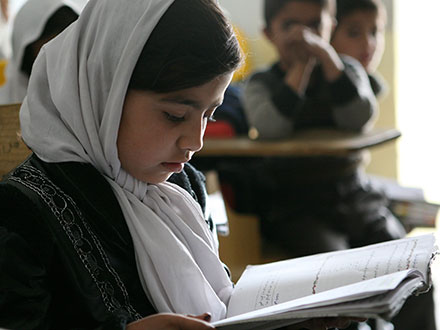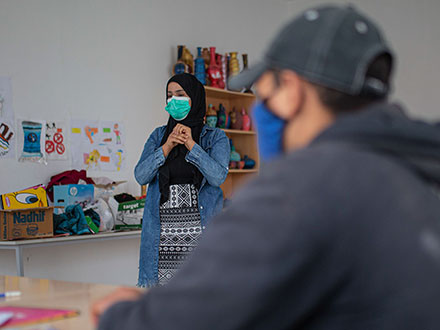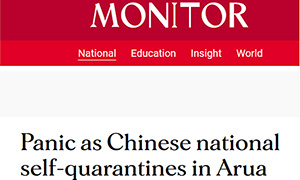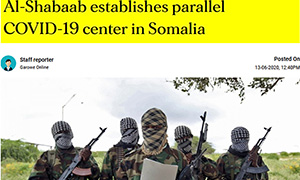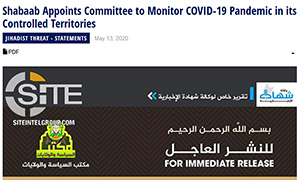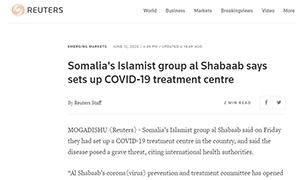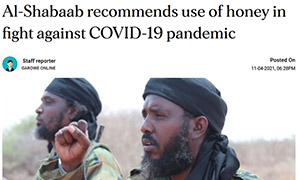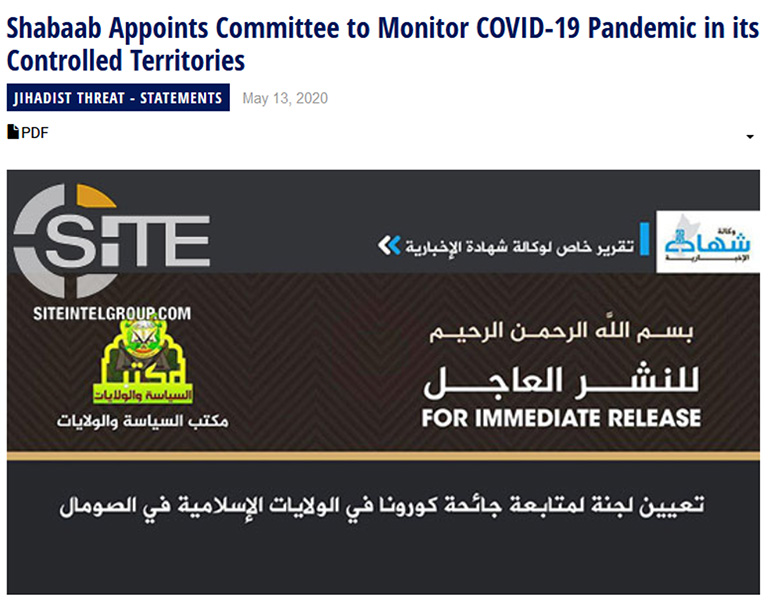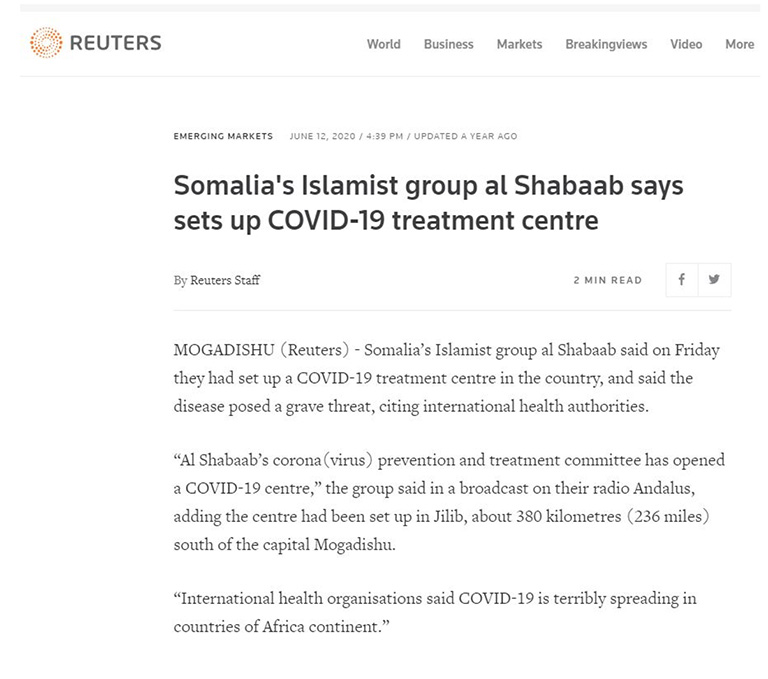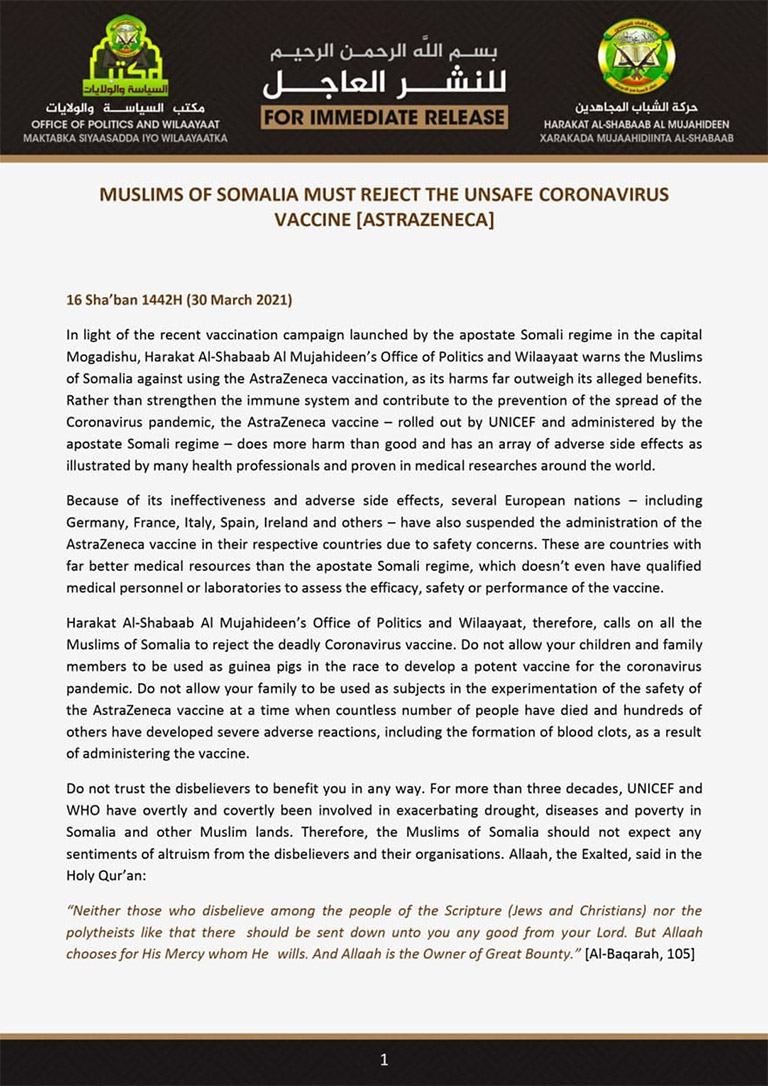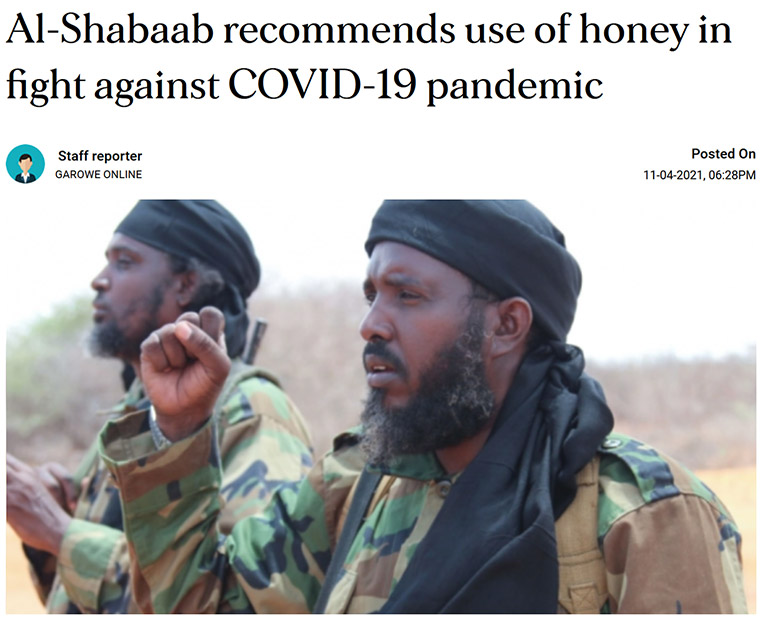
The Reshaping of the Terrorist and Extremist Landscape in a Post Pandemic World
A major research program investigating the impact of COVID-19 on terrorist and extremist narratives.
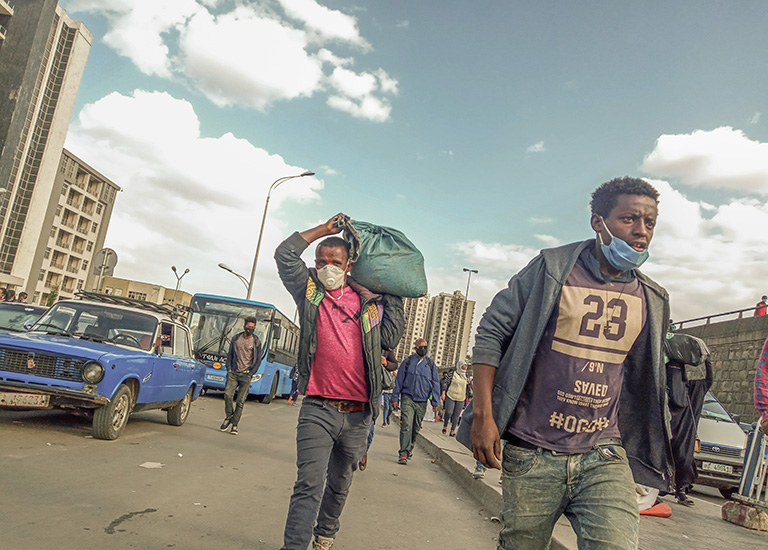
East Africa
COVID-19 has claimed upwards of 250,000 lives across Africa. During the pandemic crisis, “violent extremists have been able to exploit deteriorating security, social, and economic circumstances to gain further support for their ideologies.” Insights from over 100 interviews across East Africa, including the Horn, illustrate the varied impact of COVID-19 on terrorism and violent extremism amid escalating attacks in the region.
Choose which year of analysis to view via the slider below: 2021 or 2020.
Region Summary | Choose Year
In the East and Horn of Africa region, Violent Extremist Organizations (VEOs) and Non- State Armed Groups (NSAGs) changed and adjusted their narratives to varying degrees, weaponizing the pandemic while seeking to radicalize and recruit new members. Individual VEOs directly incorporated the pandemic into their messaging, often indicting public health measures for being discriminatory against Muslims. Others espoused apocalyptic or insular anti-Western and Chinese conspiracy theories. In addition, eugenics theories emerged, purporting that the virus or vaccines were designed to eliminate entire groups. When local groups did not adjust their narratives to fit the local or regional context, this trend was carried across borders from other VEOs into the neighboring countries.
Examples of extremist narratives and propoganda in East Africa
VEOs, especially Al-Shabaab, successfully escalated their use of digital communication platforms amid a shift to less in-person contact during the pandemic restrictions. Interviewees noted significant changes in radicalization and recruitment patterns online in the Federal Republic of Somalia, the Republic of Kenya, and the Federal Democratic Republic of Ethiopia. This mainly included observed growth of various groups’ online presence in these countries to intensify their recruitment and radicalization efforts. In the United Republic of Tanzania, the Republic of Uganda, and the State of Eritrea, there was little evidence to suggest an increase in the online presence of extremist groups or recruitment and radicalization campaigns.
The pandemic impacted VE activity differently across the region. Somalia recorded a decrease in terrorist attacks between January and December 2020, but conflict in the country remained widespread. Kenya and Ethiopia experienced an increase in terrorist attacks in 2020 compared with the year prior. In Tanzania, transborder terrorist attacks from the Republic of Mozambique Daesh affiliate, IS- Mozambique, were recorded. Uganda noted no terrorist attacks in 2020, potentially because of hard border closures, which may have prevented acts by the DRC-based Allied Democratic Forces (ADF). While Ethiopia and Eritrea recorded no terrorist attacks between January and December 2020, the civil conflict with the Tigray People Liberation Front (TPLF) and the Oromo Liberation Army (OLA) came into full form in the latter half of the year.

Image source: “Al-Shabaab establishes parallel COVID-19 center in Somalia,” Garowe Online, 16 June 2020
View sourceAn interesting and unique regional development on the ground that separated Al-Shabaab from the rest of the regional VEOs was the group’s active efforts to demonstrate its competency and resourcefulness by utilizing the dire health situation caused by the pandemic in their favor. The group repeatedly shared messages against governmental and foreign assistance efforts to provide necessary medical resources for citizens while propagandizing their own public health efforts in Somalia.4 Al-Shabaab reportedly furnished public health education on COVID-19 and developed a quarantine center in the country.5 The research did not observe this trend in other countries (Tanzania, Kenya, Uganda, Ethiopia, and Eritrea).
Policy Recommendations
Renewed preventing and countering violent extremism (P/CVE) efforts that take into account the current context of the East and Horn of Africa that has changed during the pandemic along with a direct response to credible regional terrorist threats are needed. The pandemic has dominated headlines, captured government focus, and allowed VEOs in the region to expand their narrative reach. The window of opportunity for extremist groups opened by the pandemic must be narrowed. To accomplish these broader suggestions in response to the new and emerging threats, the researchers propose the following:
- Governments should work with civil society organizations (CSOs) and religious actors to develop strategic communications campaigns to openly discuss and inoculate against violent extremist (VE) narratives. Novel digital literacy efforts that draw on successful counter misinformation and disinformation campaigns can provide new inspiration for helping new generations of digital natives in the East and Horn of Africa.
- Governments should continue strengthening and expanding on their work with The Intergovernmental Authority on Development (IGAD) and where possible initiate further efforts with cross-existing border and regional cooperation bodies to expand joint work between regional countries in the shared fight against terrorism. Existing offline and online security bodies should commit to more intensified tracking of changes in regional VEO activities. In this context, joint P/CVE efforts should also ensure regional support and coordination to prevent radicalization and recruitment to ease the security burden of neighboring countries. Existing offline and online security bodies should commit to more intensified tracking of changes in regional VEO activities. In this context, joint P/CVE efforts should also ensure regional support and coordination to prevent radicalization and recruitment to ease the security burden of neighboring countries.
- Cross-cutting P/CVE analysis should be included in sectoral programs responding to the effects of COVID-19, including health, education, and livelihoods. Governmental pandemic responses ought to account for social grievances and inequalities that have allowed terrorism and VE to thrive under COVID-19 conditions.
- Governments should take a more proactive approach by allocating more resources to localized P/CVE efforts. Particular support should be given to additional primary research at community and provincial levels to examine the nuances of the online and digital threat environment.
Footnotes
COVID-19 Data Repository by the Center for Systems Science and Engineering (CSSE) at Johns Hopkins University (20201). Total Confirmed Deaths due to COVID-19: Jan 22, 2020 – Dec 31, 2020 (accessed 24 November 2021).
Visit SourceBurchill, Extremism in the time of COVID-19, 7.
The countries covered in this report are Ethiopia, Eritrea, Kenya, Somalia, Tanzania, and Uganda.
C. Hockey and M. Jones, (2020), ‘The Limits of ‘Shabaab-CARE’: Militant Governance amid COVID-19’, Combating Terrorism Center, 13 (6), (Accessed 14 January 2022);
Visit Sourceibid.
Thomas Hale, Noam Angrist, Rafael Goldszmidt, Beatriz Kira, Anna Petherick, Toby Phillips, Samuel Webster, Emily Cameron-Blake, Laura Hallas, Saptarshi Majumdar, and Helen Tatlow. (2021). “A global panel database of pandemic policies (Oxford COVID-19 Government Response Tracker).” Nature Human Behaviour. https://doi.org/10.1038/s41562-021-01079-8, as used by Our World In Data; and, Armed Conflict Location & Event Data Project (ACLED), acleddata.com.
Visit SourceCOVID-19 data aggregated from Our World in Data (https://ourworldindata.org/covid-cases) based on confirmed cases sourced from the COVID-19 Data Repository by the Center for Systems Science (https://github.com/CSSEGISandData/COVID-19) and Engineering (CSSE)) at Johns Hopkins University; and, Armed Conflict Location & Event Data Project (ACLED, acleddata.com).

Region reports
For full analysis and recommendations, download the region reports for 2020 and 2021.







